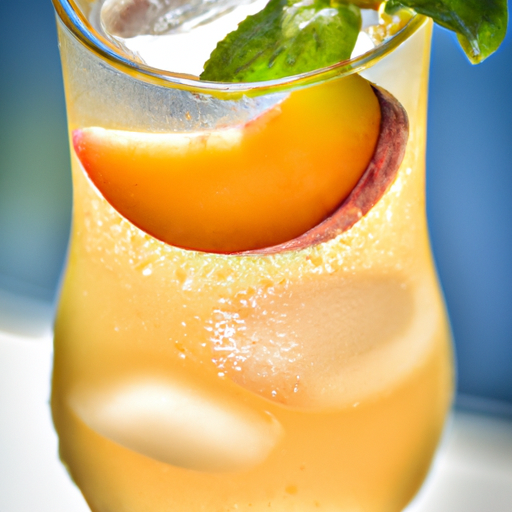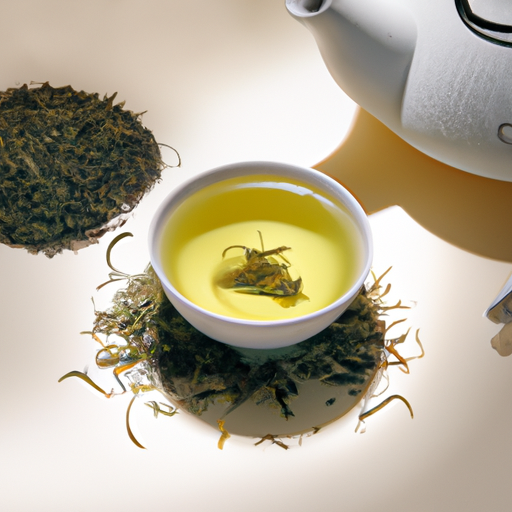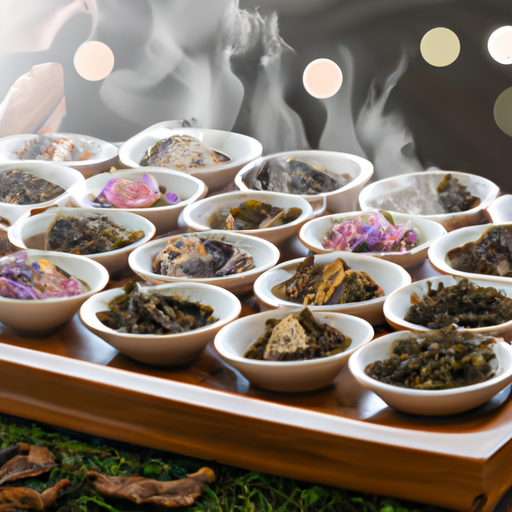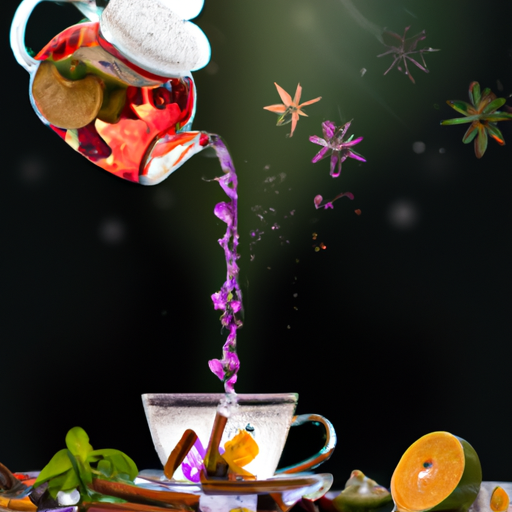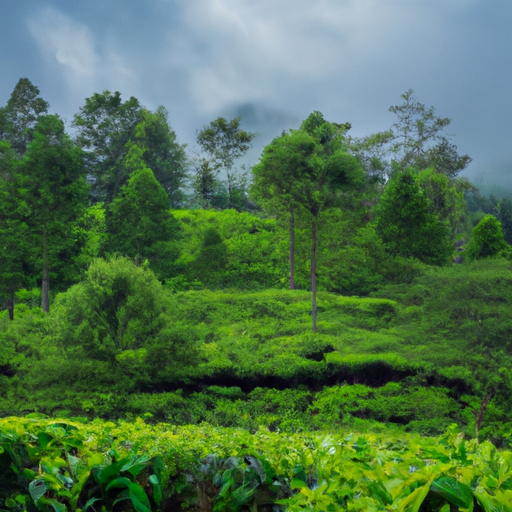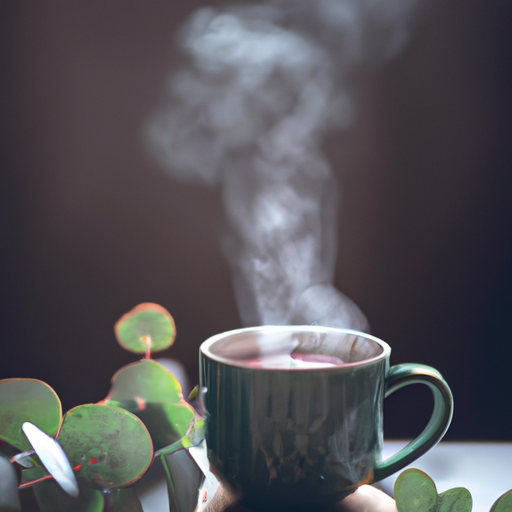Indulge in the warm hug of summer with a glass of delicious peach tea – a blend of flavors that will take you to sunny orchards and relaxed afternoons.
As the sweet aroma of ripe peaches mingles with the delicate notes of high-quality loose leaf tea, every sip becomes a moment of pure bliss.
This exquisite beverage is a testament to the beauty of simplicity, with its vibrant hues and tantalizing taste. Sip by sip, the cool liquid washes away the heat, leaving behind a trail of satisfaction.
Not only is this drink a treat for your taste buds, but it is also a healthy choice, bursting with the goodness of vitamin C, potassium, and flavonoids.
Embrace the season by using fresh, in-season peaches and enjoy the bounty of nature in every sip.
So, sit back, relax, and let the essence of summer melt away your worries – one sip of this perfect peach tea at a time.
Key Takeaways
- Peach tea is a refreshing beverage that is made from ripe peaches and high-quality loose leaf tea.
- It is rich in vitamin C, potassium, and flavonoids, providing health benefits such as collagen formation, fighting free radicals, and supporting digestion and glowing skin.
- Using fresh, in-season peaches is recommended for the best flavor and to support local farmers and reduce the carbon footprint.
- Variations can be made by adding mint or experimenting with different tea blends, allowing for customization and creativity in making peach tea.
How to Make
To make this refreshing peach tea, I start by using ripe peaches for a flavorful twist and high-quality loose leaf tea for the best results. I prefer using a Nilgiri or Ceylon black tea blend for its light and smooth flavor.
First, I wash and slice the peaches, removing the stones. Then, I blend the peaches until smooth and strain the juice for better clarity in the tea.
Next, I brew the loose leaf tea and let it steep for a few minutes until it reaches the desired strength. To enhance the peach flavor, I add a splash of lemon juice.
Once the tea is ready, I chill it in the refrigerator and serve it over ice. For variations, you can add a hint of mint or experiment with different tea blends.
When serving, garnish with lemon slices, peach slices, and fresh basil for an extra touch of freshness. This homemade peach tea is a perfect summer drink, refreshing and not too sweet. Enjoy!
Benefits and Nutrients
Sipping on a glass of homemade peach tea not only quenches my thirst on a scorching day, but it also provides me with a myriad of health benefits that nourish my body and soul.
Peaches are packed with nutrients that contribute to overall well-being. They’re rich in vitamin C, which helps with collagen formation and fights free radicals. Additionally, peaches are a good source of fiber and beta-carotene, which support healthy digestion and promote glowing skin.
When it comes to homemade peach tea, there are endless variations to explore. You can experiment with different types of tea blends, such as green tea or herbal tea, to create unique flavor profiles. Adding a splash of lemon juice enhances the peach flavor while garnishing with fresh lemon, peach, and basil adds a refreshing touch.
Whether you prefer a light and smooth black tea base or a fruity infusion, homemade peach tea is a delightful and nutritious summer drink.
Seasonal and Affordable
During the summer months, I love using seasonal fruits to create delicious and cost-effective beverages. When it comes to making refreshing peach tea, using seasonal peaches is a must. Not only are they more affordable during their peak season, but they’re also bursting with flavor.
By using locally sourced peaches, you can ensure that your tea has the freshest and juiciest fruit taste. Additionally, buying seasonal fruits supports local farmers and reduces the carbon footprint associated with transporting out-of-season produce.
So, head to your nearest farmers market or check online resources to find out which fruits are in season in your area. Embrace the seasonal availability and enjoy the benefits of cost-effective options for making your homemade peach tea.
Frequently Asked Questions
Can I use canned peaches instead of fresh peaches to make peach tea?
Sure, using canned peaches in peach tea is like settling for a pre-packaged sunset instead of experiencing the real thing. Fresh peaches bring a burst of flavor and natural sweetness. Also, using honey adds a delightful, healthier twist to your homemade peach tea.
Can I use green tea instead of black tea for peach tea?
Yes, you can use green tea instead of black tea for peach tea. It will give a different flavor profile, but still delicious. For the best peach tea recipe, use ripe peaches, high-quality loose leaf green tea, and balance the fruit flavor with the tea flavor.
How long does homemade peach tea last in the refrigerator?
The shelf life of homemade peach tea in the refrigerator is typically 2-3 days. To extend its freshness, store it in an airtight container and keep it chilled. Avoid adding ice or garnishes until ready to serve.
Can I use honey instead of sugar to sweeten my peach tea?
I investigated the truth of whether honey can be used instead of sugar to sweeten peach tea. Honey adds a unique flavor and additional health benefits. Using fresh peaches over canned ones enhances the flavor and nutritional value of the tea.
Can I add other fruits, like strawberries or raspberries, to my peach tea for added flavor?
Yes, you can definitely add strawberries or raspberries to your peach tea for added flavor. It will enhance the taste and add a delightful twist. Using fresh peaches is preferable over canned peaches as it brings out a more vibrant and natural flavor.
Conclusion
In conclusion, peach tea is the ultimate summer drink that combines the refreshing taste of ripe peaches with the delicate flavors of high-quality black tea. By using fresh, seasonal peaches and top-notch loose leaf tea, you can create a beverage that’s both delicious and nutritious. With a splash of lemon juice and some creative garnishes, this homemade treat will transport you to a sunny paradise with every sip.
So why not indulge in this delightful coincidence of flavors and enjoy the perfect summer drink? Cheers to peach tea!

